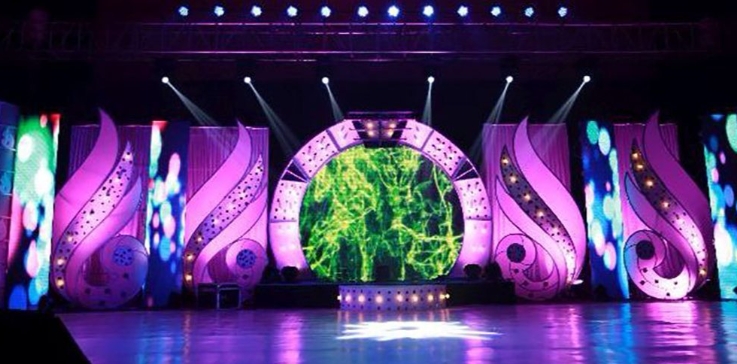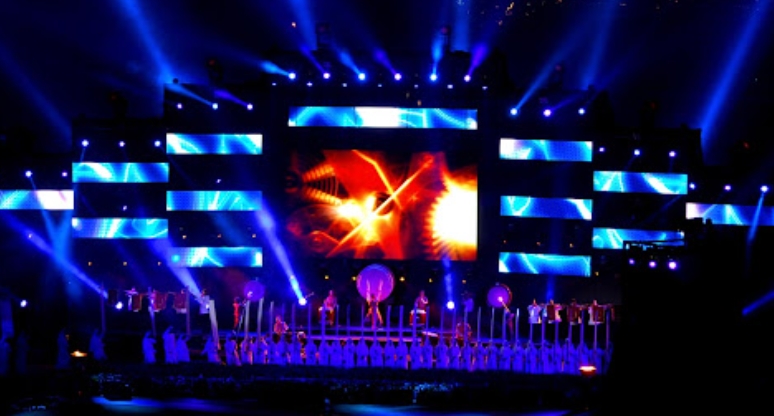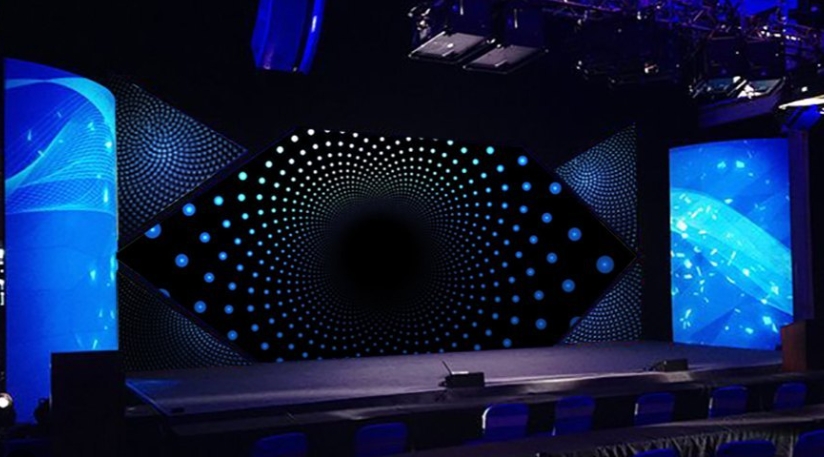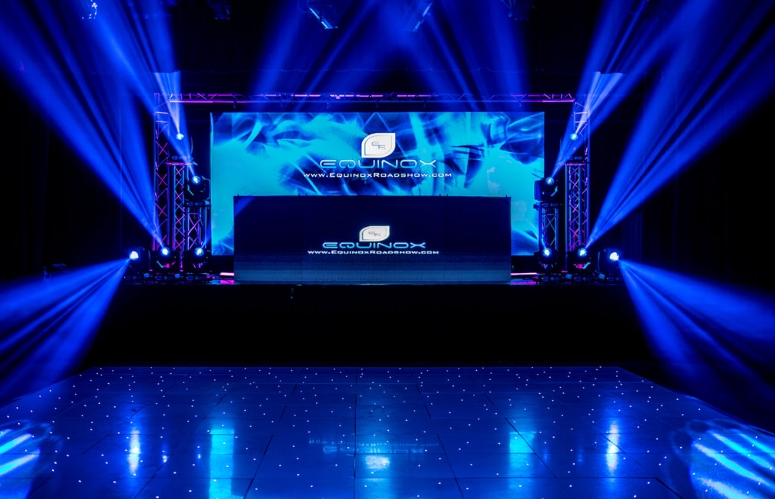An LED display, also known as an LED screen or LED panel, is a technology that utilizes light-emitting diodes (LEDs) to display visible contents. LED displays have become increasingly popular and are widely used in various applications, including digital signage, advertising, stadiums, concerts, retail spaces, control rooms, and more. Here in this article, we’ll discuss almost everything about LED displays including types and advantages of LED displays, how LED display works, how much power it consumes and how long it lasts.

LED displays consist of numerous individual LEDs grouped together to form pixels. Each pixel typically comprises three LEDs: red, green, and blue (RGB). By independently controlling the intensity of each RGB LED, the display can produce a wide range of colors and shades. This ability to create vibrant and dynamic visuals makes LED displays highly versatile and visually appealing.
There are two main types of LED displays.
Direct View LED (dvLED) Display:
In a dvLED display, the LEDs are directly visible, and each LED acts as an individual pixel. dvLED displays are made up of modules or panels containing numerous LEDs, which are seamlessly assembled to form a larger display. dvLED displays offer high brightness, excellent color reproduction, wide viewing angles, and scalability, making them suitable for large-scale installations.
LED-backlit LCD Display:
LED-backlit LCD displays, commonly found in televisions, computer monitors, and smaller screens, use LEDs as a backlight to illuminate liquid crystal display (LCD) panels. The LEDs are positioned behind the LCD layer and provide the necessary illumination for the pixels to display the images. LED-backlit LCD displays offer improved brightness, energy efficiency, and color vibrancy compared to older CCFL (cold cathode fluorescent lamp) backlit LCD displays.
LED displays offer several advantages over other display technologies.
LED displays continue to evolve, with advancements in technology leading to higher pixel densities, improved color accuracy, finer pitch sizes, and flexible or curved displays. These developments have further expanded the range of applications and possibilities for LED display technology.

LED displays work by utilizing the properties of light-emitting diodes (LEDs) to create images or videos. Here’s a general overview of how LED displays function:
LED Structure:
Each LED in an LED display consists of semiconductor materials that emit light when an electric current passes through them. The LED typically contains three semiconductor layers: one doped with a material that emits red light, another doped with green-emitting material, and a third doped with blue-emitting material (RGB LEDs). These three colors of light can be combined to create a wide range of colors.
Pixel Formation:
LED displays are composed of numerous pixels, with each pixel comprising a cluster of RGB LEDs or a single RGB LED (in the case of direct view LED displays). Pixels are arranged in a grid formation, forming the display’s resolution.
Control Circuitry:
LED displays are controlled by a circuitry system that manages the flow of electrical signals to each LED. The control circuitry receives input signals, such as video or image data, from a video source or a computer. It processes these signals and determines the appropriate intensity for each LED to create the desired image.
Color Mixing:
To display a specific color, the control circuitry adjusts the intensity of the red, green, and blue LEDs within each pixel. By controlling the relative brightness of each color, the desired color is achieved. This process, known as color mixing, allows for a vast range of colors to be displayed on the LED screen.
Refreshing the Display:
LED displays typically employ a technique called “persistence of vision” to create the illusion of continuous motion. The display is divided into frames, and each frame is further divided into multiple sub-frames or scan lines. The control circuitry rapidly updates the pixel values for each sub-frame, illuminating the LEDs accordingly. This quick updating of LEDs creates the appearance of smooth motion when viewing videos or animations.
Displaying Content:
Once the control circuitry has determined the appropriate intensities for each LED, the LEDs emit light at the specified levels. The emitted light combines across the entire display to form the desired image or video. The brightness and color accuracy of the LEDs contribute to the overall quality and visual appeal of the displayed content.
LED displays can vary in complexity and technology, such as direct view LED displays or LED-backlit LCD displays. However, the fundamental principle of utilizing LEDs to emit light and controlling their intensities to create images remains consistent across various LED display types.

The power consumption of an LED display can vary depending on several factors, including the size of the display, the type of LED technology used, the brightness level, and the content being displayed. Here are some general guidelines regarding power consumption.
LED Display Size:
Larger LED displays typically consume more power than smaller ones. This is because larger displays require more LEDs to cover the surface area, resulting in higher power consumption.
LED Technology:
Different LED technologies, such as direct view LED displays and LED-backlit LCD displays, have varying power requirements. Direct view LED displays tend to consume more power compared to LED-backlit LCD displays.
Brightness Level:
The brightness level of an LED display has a significant impact on its power consumption. Higher brightness settings require more power to achieve the desired luminance. Outdoor LED displays often need higher brightness levels to combat ambient light, which can result in higher power consumption.
Content Being Displayed:
The content displayed on an LED screen can also affect power consumption. For example, displaying bright, white content may consume more power than displaying darker or more static content.
It’s essential to refer to the specifications provided by the manufacturer for specific power consumption information. Typically, LED display manufacturers provide power consumption values in watts (W) or average power consumption per square meter (W/m²) for their products.
LED displays are designed to be energy-efficient compared to older display technologies like plasma or CCFL-backlit LCD displays. LED technology offers improved energy efficiency by utilizing light-emitting diodes that require less power to produce light. LED-backlit LCD displays are generally more energy-efficient than direct view LED displays.
To optimize power consumption, LED displays often include features like automatic brightness adjustment based on ambient light conditions, power-saving modes, and energy management settings. These features help reduce power consumption when the display is not in use or when lower brightness levels are sufficient.
Ultimately, the power consumption of an LED display will depend on various factors, and it’s important to consider these factors and consult the manufacturer’s specifications for accurate power consumption information for a specific LED display model.

LED displays are known for their longevity and durability compared to other display technologies. The lifespan of an LED display can vary depending on several factors, including the quality of the LEDs, the operating conditions, and the usage patterns. Here are some general considerations regarding the lifespan of an LED display.
LED Lifespan:
LEDs themselves have a long lifespan, typically measured in tens of thousands of hours. High-quality LEDs used in LED displays can often last between 50,000 to 100,000 hours or even more, depending on the specific LED manufacturer and the operating conditions.
Operating Conditions:
The operating conditions of an LED display can affect its lifespan. Factors such as temperature, humidity, and proper ventilation play a role in the longevity of the display. Extreme temperatures, excessive humidity, or poor ventilation can impact the performance and lifespan of the LEDs.
Brightness and Usage:
The brightness level at which an LED display operates can influence its lifespan. Running the display at maximum brightness for extended periods may reduce its lifespan compared to operating at lower brightness levels. Additionally, the intensity and duration of usage can also affect the overall lifespan of the display.
Maintenance and Care:
Proper maintenance and care can contribute to extending the lifespan of an LED display. Regular cleaning, ensuring proper ventilation, and addressing any issues promptly can help maintain the performance and longevity of the LEDs.
It’s important to note that LED displays do not abruptly fail at the end of their lifespan. Instead, the brightness and color performance of the LEDs may gradually degrade over time. Manufacturers often specify the expected lifespan of their LED displays based on certain usage conditions, such as a certain number of operational hours per day.
When considering the lifespan of an LED display, it’s advisable to consult the manufacturer’s specifications and warranty information, as they can provide more specific details regarding the expected lifespan of their products. Additionally, proper installation, usage within specified parameters, and regular maintenance can help maximize the lifespan of an LED display.